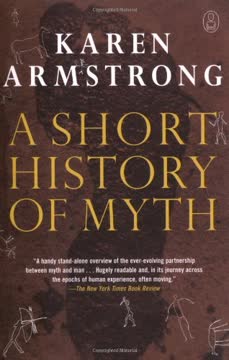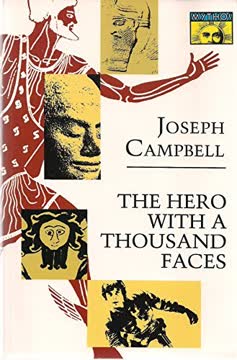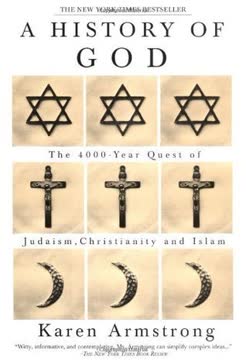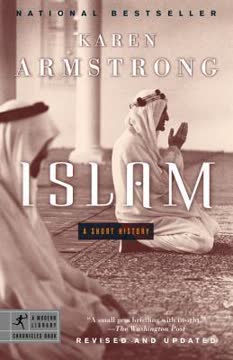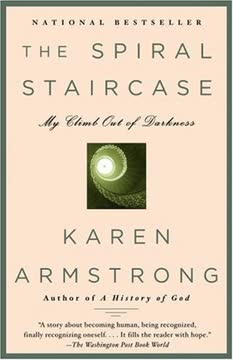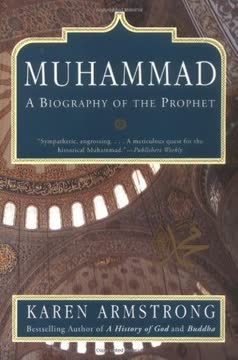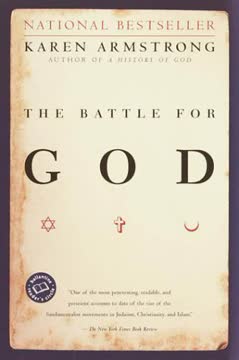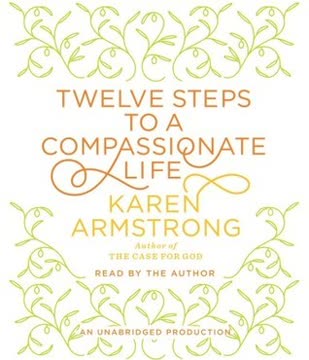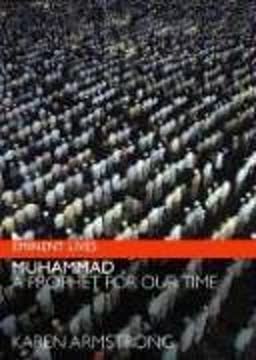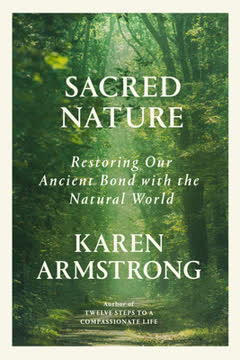Key Takeaways
1. Myth is a fundamental human need for meaning and transcendence.
We are meaning-seeking creatures.
Innate human drive. From the earliest Neanderthal graves, humans have shown a unique capacity to imagine beyond immediate experience, creating narratives to confront mortality and find meaning. Unlike animals, we agonize about our condition and invent stories to place our lives in a larger, underlying pattern.
Imagination's role. The same imaginative faculty that drives scientific discovery also produces religion and mythology. Myth is not about escaping the world but enabling us to live more intensely within it, extending the scope of human understanding and experience beyond the purely rational.
Beyond the mundane. Mythology speaks of an invisible plane alongside our own, a divine realm supporting earthly reality. This "perennial philosophy" suggests everything here is a shadow of a richer archetype, and participating in this divine life fulfills human potential, giving shape to intuitively sensed realities.
2. Myth is inseparable from ritual and demands action, not just belief.
A myth is essentially a guide; it tells us what we must do in order to live more richly.
Rooted in practice. Mythology is usually incomprehensible outside the liturgical drama or ritual that brings it to life. It's not a story told for entertainment or factual information, but a guide showing us how to behave and putting us in the correct spiritual or psychological posture for right action.
Effectiveness is truth. A myth is considered "true" not because it's factually accurate, but because it's effective. If it forces us to change our minds and hearts, gives hope, and compels us to live more fully, it is valid. Reading a myth without its accompanying ritual is incomplete, like reading opera lyrics without music.
Transformation required. Mythology only transforms us if we apply it to our own lives and make it a reality. It pushes us beyond familiar certainties into the unknown, demanding that we allow it to change us forever, often encountered in solemn contexts of spiritual and psychological transformation like initiation rites.
3. Palaeolithic myths reflected the hunter's world, death, and the hero's quest.
The first great flowering of mythology, therefore, came into being at a time when homo sapiens became homo necans, ‘man the killer’, and found it very difficult to accept the conditions of his existence in a violent world.
Survival and anxiety. Mythology was essential for Palaeolithic hunters, helping them cope with the dangers and psychological ambivalence of killing prey. These early stories, preserved in later cultures, show a deep reverence for animals, seen as wise beings, despite the necessity of taking their lives for survival.
Sacred landscape. The natural world was transparent to the divine; stones, trees, and the sky were not worshipped themselves but revered as epiphanies of a hidden, potent reality. The sky, in particular, gave people their first notion of the divine as transcendent and awe-inspiring, a mysterium tremendum.
Shaman and hero. Early myths of ascent, possibly linked to the sky, were associated with the shaman, who journeyed in spirit to the divine world for the community. This theme of the hero's quest—leaving the familiar, facing death, and returning with gifts—was forged in this era, reflecting the hunter's dangerous expeditions and initiation rites.
4. Neolithic myths centered on agriculture, the Mother Goddess, and cycles of death and rebirth.
Agriculture was the product of logos but, unlike the technological revolutions of our own day, it was not regarded as a purely secular enterprise.
Sacred farming. The agrarian revolution led to a spiritual awakening, viewing farming as a sacramental activity. Watching seeds die and bring forth new life revealed a hidden divine energy, making the earth herself sacred and a manifestation of the divine, often personified as the maternal, nurturing Mother Goddess.
Violence and renewal. Despite the nurturing image, the Mother Goddess retained frightening aspects, reflecting agriculture's struggle against sterility and nature's violent forces. Myths depicted her consorts being torn apart and killed, mirroring the painful death of the seed and the constant battle required for food production.
Death as passage. Myths like those of Inanna/Dumuzi or Demeter/Persephone emphasized that life and death are inextricably entwined. These stories, often enacted in rituals like the Eleusinian mysteries, taught acceptance of mortality as an essential part of life, a necessary death leading to spiritual regeneration and the courage to change.
5. Early Civilizations created urban myths grappling with order, chaos, and the gods' retreat.
With mingled apprehension and hope, the new urban myths meditated on the endless struggle between order and chaos.
Civilization's paradox. The rise of cities brought excitement, control over the environment, and the invention of writing, but also fear of decay and a return to barbarism. Urban myths, like the Mesopotamian Enuma Elish, reflected this struggle, seeing civilization as a heroic effort against destructive natural forces and social dissolution.
Gods become distant. As human ingenuity took center stage, the gods seemed more remote, no longer sharing the same nature as humans. Flood myths, like Atrahasis, marked a crisis in divine-human relations, depicting gods withdrawing from direct intervention, leaving humans to rely more on their own technology and culture.
Myth meets history. Urban myths began to impinge on the historical world, with figures like Gilgamesh, a historical king, becoming the subject of epic poems. The Epic of Gilgamesh shows a shift from seeking divine aid to reflecting on human limitations and finding immortality in cultural achievements like city walls and writing.
6. The Axial Age brought spiritual interiority, ethics, and a critical re-evaluation of myth.
All the sages recoiled from the violence of their time, and preached an ethic of compassion and justice.
Pivotal transformation. The Axial Age (c. 800-200 BCE) saw the rise of new religious and philosophical systems across Eurasia, driven by a shared consciousness of suffering and a yearning for a more spiritualized, ethical religion. Sages like the Hebrew prophets, Buddha, Confucius, and Greek philosophers emphasized individual conscience and compassion.
Looking within. These traditions stressed the need to look within for truth, questioning old values and relying less on external rituals or priestly authority. Mythology was re-evaluated, often given more interior and ethical interpretations, though people still instinctively turned to old myths to confront the psyche's mysteries.
Transcendent but remote. While yearning for transcendence persisted, the sacred now seemed distant, even alien, separated from mortals by a gulf. This changed religious experience made old anthropomorphic myths problematic, leading some traditions, like early Chinese high culture or Greek philosophy, to move away from traditional divine narratives.
7. Monotheistic traditions developed complex, sometimes uneasy relationships with myth.
Did these events really happen or are they ‘only’ myths?
History and myth. Unlike traditions where history is seen as illusory, Judaism, Christianity, and Islam believe their god acts in history. However, historical events become religiously significant only when mythologized, transformed from unique incidents into timeless occurrences that can be experienced by contemporary worshippers through ritual and ethical action.
Mythologizing history. St. Paul transformed the historical Jesus into a mythical hero who dies and is resurrected, an event reenacted in baptism and the Eucharist, making it a spiritual reality for believers. Similarly, the Exodus story is a myth, made central to Jewish life through Passover rituals and the ethical demand for freedom.
Ambivalence and adaptation. Monotheism often seemed antagonistic to the myths of other nations, yet paradoxically drew upon foreign stories or concepts to express its own vision. The tension between historical claims and mythical interpretation would become a recurring theme, particularly in the West.
8. Mysticism provided a vital space for mythical expression within monotheism.
Mystics make a journey into the depths of the psyche by means of the disciplines of concentration that have been developed in all the religious traditions and have become a version of the hero’s mythical quest.
Exploring the interior. Mysticism, focused on ineffable inner experiences, naturally turned to mythology to describe the journey into the psyche's depths. Despite potential conflicts with orthodoxy, mystics across Judaism (Kabbalah), Christianity, and Islam used mythical language and structures to articulate their apprehension of the divine.
New myths emerge. Kabbalists, for example, devised creation myths and divine emanations (sefirot) that bore little resemblance to biblical accounts but expressed their mystical insights into the godhead's hidden life. The myth of the Shekhinah's exile and return provided a powerful narrative for Jewish suffering and spiritual practice.
Symbolic truth. These mystical myths were not intended to be taken literally but were symbolic ways of expressing a sense of sacred presence or the soul's journey. Like Lurianic Kabbalah responding to the Spanish expulsion, these myths provided therapeutic meaning in times of crisis, demonstrating myth's enduring power beyond rational explanation.
9. The Western Enlightenment prioritized logos, leading to the perceived "death of myth."
This meant that intuitive, mythical modes of thought would be neglected in favour of the more pragmatic, logical spirit of scientific rationality.
Triumph of reason. Western modernity, founded on technological replication and scientific inquiry, prioritized logos and efficiency. Science became the new hero, venturing into uncharted realms and demanding rational proof, leading to the denigration of myth as useless, false, and outmoded.
Myth becomes problematic. The new scientific worldview challenged traditional mythical understandings, such as humanity's place in the cosmos or the nature of God. Figures like Newton dismissed doctrines like the Trinity as illogical mysteries, failing to grasp their mythical, symbolic function.
Secularizing the sacred. The Protestant Reformation's emphasis on scripture and individual reading, coupled with the invention of printing, altered the perception of sacred texts. When read outside ritual context and approached for factual information, biblical narratives were increasingly seen as "myths" in the sense of being untrue.
10. Modernity's loss of myth has contributed to despair and a search for new meaning.
Without myth, cult, ritual and ethical living, the sense of the sacred dies.
Spiritual vacuum. As modernization progressed and logos achieved spectacular results, mythology was increasingly discredited, leaving a spiritual vacuum. This led to despair, alienation, and a sense of impotence as the old mythical framework for finding meaning crumbled without replacement.
Irrationality persists. Despite the Age of Reason, irrationality persisted, as seen in phenomena like the Witch Craze, where unconscious fears were rationalized into destructive beliefs. Attempts to create rational religions or mass mystical movements without proper guidance sometimes led to mental distress and hysteria.
Myth misunderstood. By the 19th century, myth was often seen as incompatible with science and harmful, leading to conflicts like the one over Darwin's Origin of Species. Reading cosmogonies literally resulted in "bad science and bad religion," and the Higher Criticism further eroded literal interpretations, leaving many feeling that faith itself was jeopardized.
11. We need new, ethically informed myths for a globalized and challenged world.
We need myths that help us to venerate the earth as sacred once again, instead of merely using it as a ‘resource’.
Confronting nihilism. The 20th century's dark events exposed the limits of logos alone to provide meaning or prevent barbarism. Without the mythical discipline for facing death and nothingness, despair is difficult to avoid, leaving many unable to draw on the full resources of their humanity.
Modern myth-making. While traditional myth has declined, humans remain myth-making creatures, creating destructive modern myths based on exclusion and egoism. Art and literature have stepped into the vacuum, using mythical themes to explore modern dilemmas and provide a sense of shared experience and compassion.
A call for renewal. We need myths infused with Axial Age ethics—compassion, justice, and respect for all life—to counter destructive narratives and address global challenges like environmental degradation. These new myths must help us transcend selfishness, experience transcendent value, and see the world as sacred once more.
Last updated:
FAQ
1. What is "A Short History of Myth" by Karen Armstrong about?
- Exploration of Mythology: The book traces the evolution of myth from prehistoric times to the modern era, examining how myths have shaped and reflected human experience.
- Role of Myths: Armstrong discusses how myths provided meaning, helped people cope with existential fears, and guided behavior through ritual and narrative.
- Historical Overview: The book is structured chronologically, covering the Palaeolithic, Neolithic, early civilizations, the Axial Age, the post-Axial period, and the modern Western transformation.
- Modern Relevance: Armstrong argues that myths are not obsolete but remain essential for understanding ourselves and addressing contemporary crises.
2. Why should I read "A Short History of Myth" by Karen Armstrong?
- Understanding Human Nature: The book offers insights into why humans create myths and how these stories fulfill deep psychological and social needs.
- Cultural Literacy: It provides a concise overview of major mythological traditions and their influence on religion, art, and society.
- Contemporary Application: Armstrong connects ancient myths to modern issues, showing how mythic thinking can address alienation and meaninglessness in today's world.
- Accessible Scholarship: The book distills complex ideas into clear, engaging prose, making it suitable for both general readers and those new to the study of mythology.
3. What are the key takeaways from "A Short History of Myth" by Karen Armstrong?
- Myth as Meaning-Making: Myths are not primitive science or falsehoods, but imaginative frameworks that help humans find meaning and cope with life's mysteries.
- Evolution of Myth: Mythology has evolved alongside human society, adapting to new social, economic, and spiritual challenges.
- Complementarity of Mythos and Logos: Armstrong distinguishes between mythos (imaginative, meaning-making) and logos (rational, pragmatic), arguing both are necessary for a balanced life.
- Modern Loss of Myth: The decline of myth in the modern West has led to spiritual and existential crises, which Armstrong suggests can be addressed by reviving mythic consciousness.
4. How does Karen Armstrong define "myth" in "A Short History of Myth"?
- Imaginative Narratives: Myths are stories that use imagination to explore realities beyond everyday experience, often addressing existential questions.
- Not Literal Truths: Armstrong emphasizes that myths are not meant to be factual or historical accounts, but are "true" in their psychological and spiritual effectiveness.
- Ritual and Transformation: Myths are closely tied to ritual, serving as guides for behavior and tools for personal and communal transformation.
- Timeless and Universal: Myths express perennial human concerns, such as death, transcendence, and the search for meaning, making them relevant across cultures and eras.
5. What is the difference between "mythos" and "logos" according to "A Short History of Myth" by Karen Armstrong?
- Mythos: Refers to the intuitive, imaginative, and meaning-making aspect of human thought, embodied in myths, rituals, and art.
- Logos: Represents rational, pragmatic, and scientific thinking, focused on practical problem-solving and factual accuracy.
- Complementary Roles: Armstrong argues that pre-modern societies balanced both, using logos for practical needs and mythos for existential and spiritual questions.
- Modern Imbalance: The modern West has privileged logos, often dismissing mythos as irrational, leading to a loss of meaning and spiritual depth.
6. How does "A Short History of Myth" by Karen Armstrong explain the origins and functions of myth in early human societies?
- Response to Mortality: Myths arose as humans became conscious of death and sought narratives to make sense of mortality and the unknown.
- Ritual and Sacrifice: Early myths were inseparable from ritual practices, such as burial rites and sacrifices, which helped communities cope with existential anxieties.
- Connection to Nature: Myths reflected a sense of participation in the sacred, with natural objects like stones, trees, and the sky seen as manifestations of divine power.
- Guides for Behavior: Myths provided models for right action, helping individuals and societies navigate transitions, crises, and the challenges of survival.
7. What are the major historical periods of mythological development described in "A Short History of Myth" by Karen Armstrong?
- Palaeolithic Period: Mythology of the hunters, focused on shamanism, animal spirits, and the quest for transcendence.
- Neolithic Period: Mythology of the farmers, centered on fertility, the earth mother, and the cycles of life and death.
- Early Civilizations: Urban myths reflecting the rise of cities, the struggle between order and chaos, and the emergence of written mythologies.
- Axial Age: A pivotal era (c. 800–200 BCE) marked by new religious and philosophical systems emphasizing ethics, compassion, and interiority.
- Post-Axial and Modern Periods: The transformation and decline of myth in the face of rationalism, science, and modernity.
8. How does "A Short History of Myth" by Karen Armstrong describe the impact of the Axial Age on mythology and religion?
- Spiritual Revolution: The Axial Age introduced new religious and philosophical systems (e.g., Buddhism, Confucianism, Greek rationalism, monotheism) that reinterpreted or critiqued traditional myths.
- Ethical Focus: Myths were given more interior and ethical meanings, emphasizing compassion, justice, and personal transformation.
- Transcendence and Alienation: The sacred became more remote, with a growing sense of separation between humans and the divine.
- Critical Scrutiny: Myths were no longer accepted uncritically; they were examined, reinterpreted, or even rejected in light of new values and insights.
9. What does "A Short History of Myth" by Karen Armstrong say about the decline of myth in the modern Western world?
- Rise of Logos: The scientific revolution and Enlightenment prioritized rational, empirical thinking, often dismissing myth as false or obsolete.
- Loss of Meaning: The decline of mythic thinking led to spiritual alienation, existential anxiety, and a sense of disconnection from the sacred.
- Secularization of Ritual: Religious rituals and myths lost their transformative power, becoming mere symbols or historical curiosities.
- Need for New Myths: Armstrong argues that modern society still needs myths to address deep psychological and social needs, warning of the dangers of "bad myths" (e.g., totalitarian ideologies) in the absence of positive, compassionate ones.
10. How does Karen Armstrong suggest we can revive or reinterpret myth in the contemporary world, according to "A Short History of Myth"?
- Recognize Myth’s Value: Armstrong urges a reappraisal of myth as a vital mode of thought, not an inferior or outdated one.
- Art and Literature: She highlights the role of modern artists and novelists in creating new myths or reworking old ones to address contemporary issues.
- Ethical and Spiritual Renewal: Myths should be infused with compassion, respect for all life, and a sense of the sacred, helping us navigate global challenges.
- Personal Transformation: Engaging with myth through ritual, art, or meditation can foster personal growth and a deeper sense of meaning.
11. What are some key concepts and examples from "A Short History of Myth" by Karen Armstrong that illustrate the evolution of myth?
- Hero’s Journey: The myth of the hero’s quest, originating in the Palaeolithic, recurs in various forms across cultures and eras.
- Mother Goddess: The transition from hunting to farming societies saw the rise of powerful female deities associated with fertility, life, and death.
- Creation Myths: Stories like the Enuma Elish and Genesis reflect changing views of the cosmos, divinity, and humanity’s place in the world.
- Modern Myths: Armstrong discusses how novels like "Ulysses," "Heart of Darkness," and "Nineteen Eighty-Four" function as secular myths for the modern age.
12. What are the best quotes from "A Short History of Myth" by Karen Armstrong and what do they mean?
- "A myth is true because it is effective, not because it gives us factual information." – Armstrong emphasizes that the value of myth lies in its transformative power, not its literal truth.
- "We are meaning-seeking creatures." – This highlights the human drive to find significance and coherence in life, a need myths have historically fulfilled.
- "Mythology is the discourse we need in extremity." – Armstrong suggests that myths are most vital during times of crisis, helping individuals and societies navigate the unknown.
- "We need myths that will help us to identify with all our fellow-beings..." – She calls for the creation of inclusive, compassionate myths to address the challenges of a globalized, interconnected world.
Review Summary
A Short History of Myth offers a concise overview of mythology's evolution, from Paleolithic to modern times. While some readers found it insightful and well-written, others criticized its broad generalizations and lack of depth. Armstrong argues that myths are essential for human meaning-making and spiritual fulfillment, even in our scientific age. The book explores how myths reflect societal changes and human needs across different eras. Some readers appreciated Armstrong's accessible writing, while others felt it oversimplified complex topics. The final chapter on modern myth-making in art and literature received particular praise.
Similar Books
Download PDF
Download EPUB
.epub digital book format is ideal for reading ebooks on phones, tablets, and e-readers.
